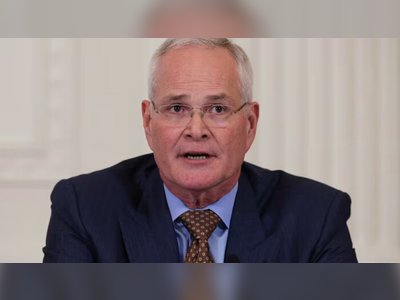
Government borrowing sharply higher than expected
Benefits, energy schemes and interest rates make government borrowing higher than expected in April.
The state borrowed nearly £12bn more last month than in April last year as it spent on energy schemes, higher benefits payments and paid billions more on interest rates, according to official figures.
Monthly borrowing increased to £25.6bn in April, up from £21.5bn in March and £13.7bn in April 2022, data from the Office of National Statistics (ONS) shows.
This means the public sector, excluding public sector banks, spent more than it received in taxes and other income and borrowed the shortfall.
The April figure is far higher than the £19.8bn economists had forecast and is the second most expensive April since monthly records began in 1993.
Behind the rise is the increased cost of servicing debt as interest rates have consistently been raised to make borrowing more expensive. The Bank of England has been hiking rates in an effort to bring down persistent double digit inflation.
Interest rate payments by central government are up nearly 50% and reached £9.8bn in April 2023, up £3.1bn from a year ago.
Benefits payments too increased during the month in line with the inflation rate of 10.1% recorded in January.
However, public sector debt as a proportion of gross domestic product (GDP), a measure of economic output and activity, has decreased from 99.6% to 99.2% of GDP.
It's still the highest figure in more than 60 years. Not since the 1960s has the net debt been this high.
Borrowing is high after periods of large state spending, such as on wars or pandemic measures.
Chancellor Jeremy Hunt said: "It is right we borrowed billions to protect families and businesses against the impacts of the pandemic and Putin's energy crisis.
"But debt and borrowing remain too high now - which is why it's one of our priorities to get debt falling. We've taken difficult but necessary decisions to balance the nation's books, and if we stick to our plan and get our economy growing, then debt is set to fall."
Economic research firm Pantheon Macroeconomics said the Office of Budget Responsibility (OBR), who are tasked with providing independent economic forecasts, are correct in their prediction that public borrowing will reach £131.6bn in the 2023-2024 year.
The forecast is "still in the right ballpark, given that both GDP and interest payments look set to surprise the OBR's assumptions to the upside".
"We doubt, however, that public borrowing will fall to the low levels in the medium term predicted by the OBR last month. The OBR is too upbeat about the economy's medium-term economic outlook," Pantheon's chief economist said.
Monthly borrowing increased to £25.6bn in April, up from £21.5bn in March and £13.7bn in April 2022, data from the Office of National Statistics (ONS) shows.
This means the public sector, excluding public sector banks, spent more than it received in taxes and other income and borrowed the shortfall.
The April figure is far higher than the £19.8bn economists had forecast and is the second most expensive April since monthly records began in 1993.
Behind the rise is the increased cost of servicing debt as interest rates have consistently been raised to make borrowing more expensive. The Bank of England has been hiking rates in an effort to bring down persistent double digit inflation.
Interest rate payments by central government are up nearly 50% and reached £9.8bn in April 2023, up £3.1bn from a year ago.
Benefits payments too increased during the month in line with the inflation rate of 10.1% recorded in January.
However, public sector debt as a proportion of gross domestic product (GDP), a measure of economic output and activity, has decreased from 99.6% to 99.2% of GDP.
It's still the highest figure in more than 60 years. Not since the 1960s has the net debt been this high.
Borrowing is high after periods of large state spending, such as on wars or pandemic measures.
Chancellor Jeremy Hunt said: "It is right we borrowed billions to protect families and businesses against the impacts of the pandemic and Putin's energy crisis.
"But debt and borrowing remain too high now - which is why it's one of our priorities to get debt falling. We've taken difficult but necessary decisions to balance the nation's books, and if we stick to our plan and get our economy growing, then debt is set to fall."
Economic research firm Pantheon Macroeconomics said the Office of Budget Responsibility (OBR), who are tasked with providing independent economic forecasts, are correct in their prediction that public borrowing will reach £131.6bn in the 2023-2024 year.
The forecast is "still in the right ballpark, given that both GDP and interest payments look set to surprise the OBR's assumptions to the upside".
"We doubt, however, that public borrowing will fall to the low levels in the medium term predicted by the OBR last month. The OBR is too upbeat about the economy's medium-term economic outlook," Pantheon's chief economist said.











